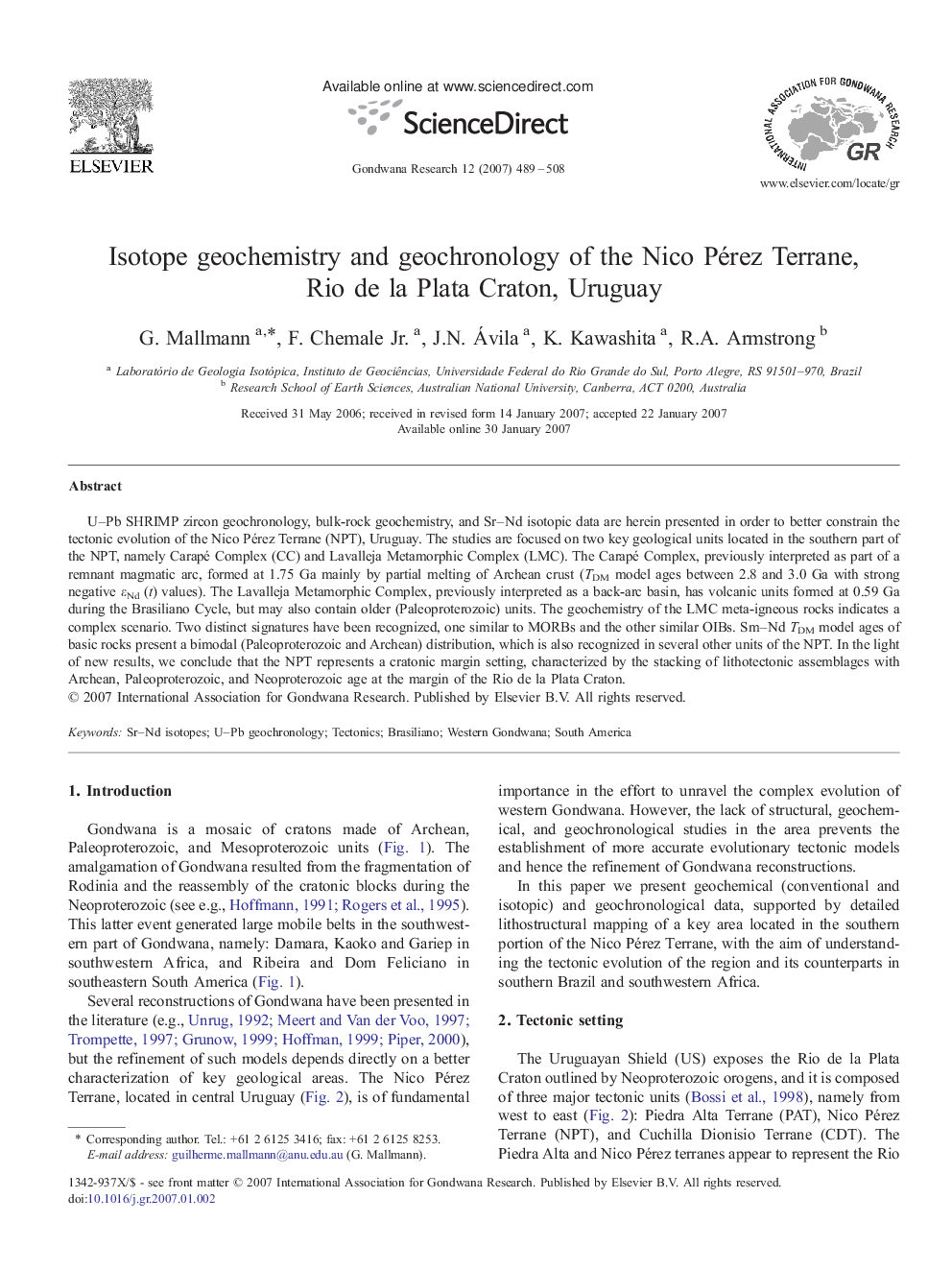| Article ID | Journal | Published Year | Pages | File Type |
|---|---|---|---|---|
| 4727783 | Gondwana Research | 2007 | 20 Pages |
U–Pb SHRIMP zircon geochronology, bulk-rock geochemistry, and Sr–Nd isotopic data are herein presented in order to better constrain the tectonic evolution of the Nico Pérez Terrane (NPT), Uruguay. The studies are focused on two key geological units located in the southern part of the NPT, namely Carapé Complex (CC) and Lavalleja Metamorphic Complex (LMC). The Carapé Complex, previously interpreted as part of a remnant magmatic arc, formed at 1.75 Ga mainly by partial melting of Archean crust (TDM model ages between 2.8 and 3.0 Ga with strong negative ɛNd (t) values). The Lavalleja Metamorphic Complex, previously interpreted as a back-arc basin, has volcanic units formed at 0.59 Ga during the Brasiliano Cycle, but may also contain older (Paleoproterozoic) units. The geochemistry of the LMC meta-igneous rocks indicates a complex scenario. Two distinct signatures have been recognized, one similar to MORBs and the other similar OIBs. Sm–Nd TDM model ages of basic rocks present a bimodal (Paleoproterozoic and Archean) distribution, which is also recognized in several other units of the NPT. In the light of new results, we conclude that the NPT represents a cratonic margin setting, characterized by the stacking of lithotectonic assemblages with Archean, Paleoproterozoic, and Neoproterozoic age at the margin of the Rio de la Plata Craton.
